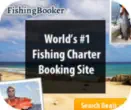TROLLING FISHING - TROUT - STRIPERS - MACKINAW - SALMON
Trolling Tips and Techniques
Catch more fish Trolling! Trolling is my favorite type of fishing. It doesn’t matter what I am going to target, I just enjoy the thrill of seeing the fish on the fish finder just before my line travels through their strike zone and it’s fish on!Trolling Rod and Reel
The first thing you need is a good rod and reel for the fish you are targeting. I use the same reel for all of my trolling, but I do change rod sizes depending on what I am fishing for. That way my reel is always ready, and I plop it on whatever rod I want to use. For my reel, I use a bait casting reel by Abu Garcia called Ambassadeur C4 Round Reel, which holds up quite well in all weather conditions, with all kinds of abuse. It’s the longest lasting reel that I have ever owned, so it is my go to choice for all of my trolling, whether it’s trout, mackinaw, stripers, landlocked king salmon, brown trout, any game fish that I target with trolling.Fishing Line for Trolling
I spool it up once with power pro braided line, usually about 30 pound test, depending on where the price break is between the sizes around that strength. I then tie the braided (instruction for the braided line to nylon fluorocarbon line is typically included in the pamphlet in the PowerPro box) to some 30 pound fluorocarbon line, which is invisible to fish and gives you the stretch you need that the braided line doesn’t have so you don’t rip the lure right out of the fish’s mouth. Don’t listen to the rumors that fluorocarbon doesn’t stretch, it stretches more than the nylon lines. Some information about fluorocarbon fishing line is shown below.Trolling With Braided Line
The benefit of using braided line is that it begins with ultra-strong braided Spectra Fiber, which is treated with the Enhanced Body Technology to create an incredibly round, smooth and sensitive line. Try braided line on your next fishing trip, and see for yourself why it's every angler's dream - and every fish's nightmare! The workhorse of braided line, typically a little pricey, but lasts a long time, and it truly is a great performing all around low stretch line.Benefits of Trolling With Fluorocarbon
Low Visibility - One of fluorocarbon's biggest benefits is it's nearly invisible underwater. This is because it doesn't appreciably distort light passing through the line (it has nearly the same refractive index as water), and it's a huge factor in clear water and when targeting skittish fish. Abrasion Resistance - Fluorocarbon's low visibility characteristics allow anglers to use stouter pound test lines in situations such as heavy cover tactics for bass. As an added benefit it also has incredible abrasion resistance and as such has quickly become a top choice of the pros when fishing the thickest cover or dragging baits along the bottom. Sensitivity - Fluorocarbon's tightly packed molecules transmit more energy than mono, better telegraphing information from the other end of the line, such as light bites or your lure ticking bottom. Also boosting sensitivity, fluorocarbon sinks faster than mono, resulting in less slack or bow between the lure and rod tip. Toughness - Fluorocarbon is more abrasion resistant than standard nylon mono filament of the same diameter. Plus, while the sun's harsh ultraviolet rays weaken nylon over time, fluorocarbon shrugs off UV with no ill-effects. Waterproof - Unlike mono and some super lines, fluorocarbon doesn't absorb water. This means it has the same strength, sensitivity and handling below the surface as it does when dry. It feels and acts the same on your first cast as it does on your last. Hooking Power - Lacking the low end stretch of nylon mono, fluorocarbon delivers more solid hook sets, even at long distances. If you need to drive the hook home at the end of a long cast, this is a key consideration. Diameter - Fluorocarbon is about the same diameter as nylon mono filament of the same break strength. But because fluorocarbon is so hard for fish to see, you can up size pound test for extra strength and abrasion resistance, without spooking line-shy fish.Trolling Rod
I combo that up with an ugly stick one piece spinning rod of various sizes and weight’s depending on what kind of fish I will be targeting. Some fishermen like lighter action rods, and some like the heavier action, so really this is just a personal choice of holding the rod in your hand, and shaking it to feel the flex and bend of the rod itself to determine which rod would work best for you. A good baitcasting rod and reel combo is a good choice as you can just let the line roll off the back of the boat with ease.Trolling Lures Baits and Scents
The next thing to consider is the hardware, lures, baits, scents, to use, which is going to be fish species specific for what you are targeting.Trolling for Rainbow Trout
• Dodger / Flasher - Bright, flashy, silver • Depth - 15 ft - 25 ft • Location - 15 ft to 100 ft off the shoreline • Lure - Needlefish, Spoons, Kastmaster, Apex • Hook Tipped With - Worm or Minnow • Scent - Trophy Trout Scent or None Trolling for Rainbow Trout can be quite fun. They love just about everything you can throw at them, but my favorite go to setup is a small silver dodger, or small blades, in varying patterns with a matched up lure with some shine. Kastmaster’s, needlefish, wedding ring’s tipped with a minnow or a worm, spoons, small apex, small stickbaits that are silver or rainbow trout pattern, small flatfish. Sometimes I’ll use scent added to the lure, and sometimes not. It’s important to try something, and if it works that day, to stick with it. If it doesn’t work, or stops working, try different lures, different dodgers, different blades. Check the motion of your setup throughout the day right next to the boat to make sure it’s moving right. A snag, or a big fish, can really change the way a lure moves, which will affect whether you get bit or not. As for depths, I like to fish on top, or in the top 15 feet of water in the morning, and slowly drop down to 25 feet as the day warms up. Try to stay about 15 ft to 100 ft off the shoreline. Keep your eyes on the fish finder to find the depths that they are swimming at and adjust accordingly. Troll in a long S pattern, which changes the depth and speed of the lure as you troll and helps you find the zone that they are hanging in. Never troll straight just waiting, it won’t work well. You may catch a fish here and there, but by trolling in a long S pattern, it changes things up and attracts more strike’s!Trolling for Brown Trout
• Dodger / Flasher - None • Depth - 5 ft - 15 ft • Location - 5 ft to 40 ft off the shoreline • Lure - Imitation Minnow Stickbaits • Hook Tipped With - Nothing • Scent - None Big Brown Trout are sought after as a trophy. They are looking to get in on the 10 Pound Brown Club, which is a prized catch. These 10+ pounders are the breeding stock, so please take a picture and release the fish. Big Brown’s are aggressive fish and typically hit a lure out of aggression or to devour it, they hit hard! Brown’s are mostly targeted by trolling as close to the shoreline around big underwater boulders. No flashers or dodgers are needed, they are best fished for by using a medium to large stickbait tied on with a Rapala knot to allow more action of the lure, and no hardware or swivels. The best patterns for me are rainbow trout, plain silver, brown trout, in various sizes of medium to large. I also like to flip some stickbaits up into shore on my second rod while I’m trolling to increase my chances. I like to have two stickbaits of each size and color so that I can take a red medium tip permanent marker and draw some red marks on the gills and spots on the body to customize the lure a little to entice more strike’s. I like to troll in five to fifteen feet of water, 5ft to 40 ft off of the shoreline, but be careful of any boulder’s you encounter that are lingering just under the surface. Don’t hit it with the boat or the motor, but do your best to troll around it because this is where they hide. You can catch them in the depths as well, but the best fishing is ripping the shore line. Keep your rod in your hand and rip the line back a few times now and then to change up the motion of the lure. When you spot a big brown suspended off the bottom, troll through that area back and forth in all directions until you trigger an aggressive strike. First and foremost Browns are aggressive opportunists. They will sit and wait for smaller fish to swim by and pounce. They will lurk around hunting smaller fish as well and chase down prey with lightning speeds. Brown trout will eat any species of fish small enough to consume. They will take an easy meal such as a worm but you will not consistently catch quality browns on a crawler in most waters. We like to do the following to trick these beautiful fish. Stick baits such as Rapala f-13 and f-18 are my lure of choice. These are ripping baits and are intended to be pulled swiftly through the water. These baits mimic small fish and can be found in many different species imitations. You need to check the action of your stick bait and tune it if necessary. Tweaking the eyelet that you tie to will tune your lure to run as desired. Early fall and late spring you want to run fast trolling speeds with stick baits. 3 to 4.5 mph seems to work well in warm water. When the water starts to get cold later in the year you need to slow it down a touch but still much faster than trout trolling. Keep in mind these lures won't work at very slow speeds. You always want to run your stick bait right on the bottom. Within 1-2 feet. Browns stay at or near the bottom most of the time. Try close to shore in 6 ft. of water first depending on how deep your lure of choice runs. Work rocky points and areas with mostly rocky bottoms. Browns like having cover. The best time to catch large browns is on the nastiest, windy, rainy days you can find. The worse weather, the better. I have no clue why but trust me bad weather equals big browns.Customize Your Trolling Lure
Change the appearance of your stick bait. Use red sharpie or model paint to add red sides, bleeding gills or red eyes. Use your imagination. This really does work. Maybe change out the front hook to a red bleeder hook. Also use lots of scent. Pro cure has awesome bait scents. UV ones for low light are great. Well trained stick baits are the best bet every time. A new shiny lure doesn't work as well as one that you've caught a lot of fish on. If you find a lure that works well it probably has just the right action. It may look the same as the next one but trust me it has that special little something that those big Lunkers like.Knots for Your Trolling Lure
Your knot plays a huge part in tricking large browns. Different knots can be found on our website. I prefer a Rapala Knot. This knot has a loop at the end attached to your lure letting the lure move more freely. I never use a swivel on a stick bait. They just don't work well in my opinion. A traditional fishing knot has it's place but not on a stick bait. They restrict the action of the lure and inhibit it's movement.Trolling Ripping Long Lining While Trolling
Lastly. Some people call it ripping. Others call it top lining, others call it long lining. Whatever you want to call it make sure you get your lure at least 100 ft. behind the boat. 200ft. is even better. Keep it ripping too. Don't let your stick bait drag behind the boat lifelessly. Jerking and ripping makes a stick bait dart around and go crazy back there and that's what those Browns love.Trolling for Mackinaw Lake Trout
• Medium to Large Silver Dodger • Depth - 30 ft to 150 ft • Location - Deep Water • Lure - Imitation Minnow Stickbaits • Hook Tipped With - Live Minnow • Scent - None There are many different ways to catch those big Mackinaw ranging from toplining the regular trout gear and a worm or minnow, locating them and targeting them with your fish finder, to using a downrigger to get to the deep water with a dodger or J plug to long lining a Rapala or AC plug to Jigging the depths with a Gibbs minnow or torpedo or even a minnow. We have caught macs using every technique we know and have a great time no matter which method we use. Minnows are only allowed to be used in the lakes in the Tahoe basin. You may only use the minnows caught from the lake you are fishing and may not transport them to other lakes. Read your local Regulations before using any live bait. Late fall to late spring the action seems to be on top. Top lining a Rapala f-18 or an AC plug will produce fish this time of year but later in the season you will need to get down deep for the fish. Early summer to fall the Macs are down deep feeding on tiny freshwater shrimp. They will take your bait if presented in front of them. Watch your sonar for fish right on the bottom and slow troll through them. The fish will be stacked up in areas where there are drop offs and ledges. I like to use a large dodger with a 14-18 inch leader with a size 4 steelhead salmon hook and a small minnow. Your bait does not need to be alive. You can use scent and the action of the dodger will make the minnow move around even if it's dead. Anything from swimbaits to J-plugs can also be effective on the wire. If you don’t have downriggers you can set up a 3 way swivel with a short dropper line to an 8 or 10 oz. lead ball to reach the depths.Trolling for Striped Bass - Stripers!
Trolling is a technique that is very affective in catching large stripers. It is a growing in popularity and is a very exciting way to fish. You can troll many different varieties of lures including: Hard Baits, Rebels, Bombers, Rapalas, Yozuris, just to name a few. Fast trolling about 3 to 4 mph is the most effective. You want to fish waters that are just slightly deeper than the depth your lure runs. It is very important that your lure stays within 2 feet from the bottom. The best time to troll for stripers is when the current is very slow. The top of high tide is your best bet for trolling but low tide is good sometimes too. Most people like to modify their trolling lure by adding a long rubber worm to the bottom of the back hook so it follows the lure. This makes the lure more visible and adds great action to an already good bait. Marking on the lure with bright paint or marker works well also. The fish usually pick up your lure from the bottom so apply your markings to the bottom and sides of the lure for best results. Be sure and keep some unmarked lures in your boat for those days when the fish don't want the marked up ones. Change your trolling lure about every thirty minutes if you aren’t catching on the one your using. Stripers change their eating habits very often and the hot lure for one day may not work at all the next. You don’t want to waste your time dragging a lure around all day that isn't going to work. Keep changing and you will find the right one.Trolling for Landlocked King Salmon
Most anglers like to troll for King’s with stickbaits that imitate the local minnows that they are accustomed to eating. Spoons, needlefish, and Apex also work well. Another method that works well is to add shad or anchovy’s to the lure. I typically soak mine in non-iodized salt to make them stick together better, and sometimes add some color and scent to the mix as well. Another method is to use a shad rolling harness and troll for the King’s. Some people like to drift live minnows. Kings generally like to hang out in deep water, typically 35 ft to 75 ft deep. I like to find a deep channel that is deeper than 80 ft deep, and will find the King’s suspended anywhere from 35ft to 75 ft deep. It’s best to troll with stickbaits, apex, spoons, flatfish, double flutter. I like to use the Kokanee model of Apex that has the double red hooks in watermelon or rainbow trout pattern, along with a sliver of shad or anchovy on the hook for some scent. I also like to add a similar color dodger or tear drop dodger 18 inches to 22 inches in front of the lure. These fish hit hard, and fight harder. Their big broom tail gives them super powerful strength and put up a great fight.YoZuri 3D Minnow Jointed Deep Diver Trolling Lure
Trolling Fishing Guides
There are a few different fishing guides that offer guided fishing trips for trolling. FishingBooker is a service to help you find a local fishing guide to schedule your next guided fishing trip with. Click here to find your next fishing guide and get you and your friends on some fish! About The Author Mike Mendenhall is the the founder of Mendenhall Outdoors. This website is an extension of the Mendenhall family’s lifestyle and passion for the great outdoors. Everything that they learn, and experience, along the way that they find may be valuable to our website visitors is on the site for you to enjoy. We highlight products and services that you might find interesting. We frequently receive free products from manufacturers to test. This does not drive our decision as to whether or not a product is featured or recommended. If you click a link on this page, then go on to make a purchase, we might receive a commission – at no extra cost to you, and does not impact the purchase price of any products that you may purchase. The Best Trolling Fishing Experience Awaits!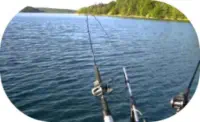
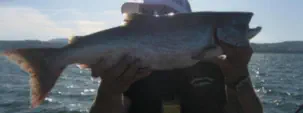
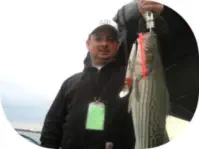
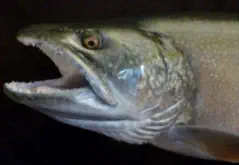
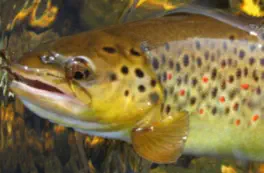
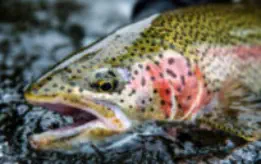

Website Designed By Mendenhall Family Enterprises
MENDENHALL OUTDOORS © 2025
Privacy Policy
copyright























